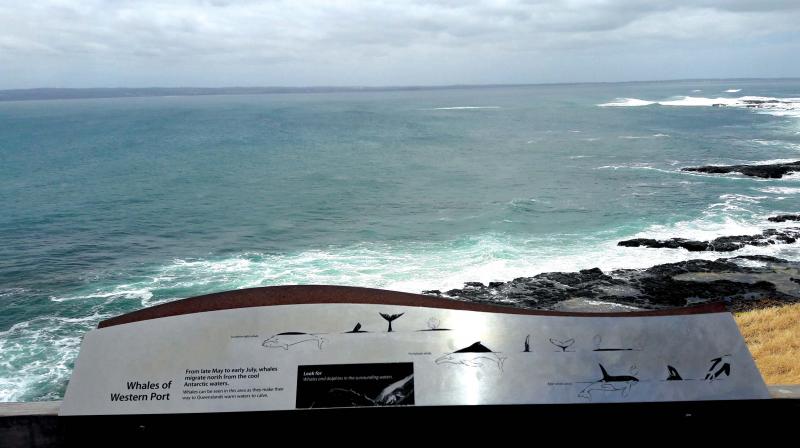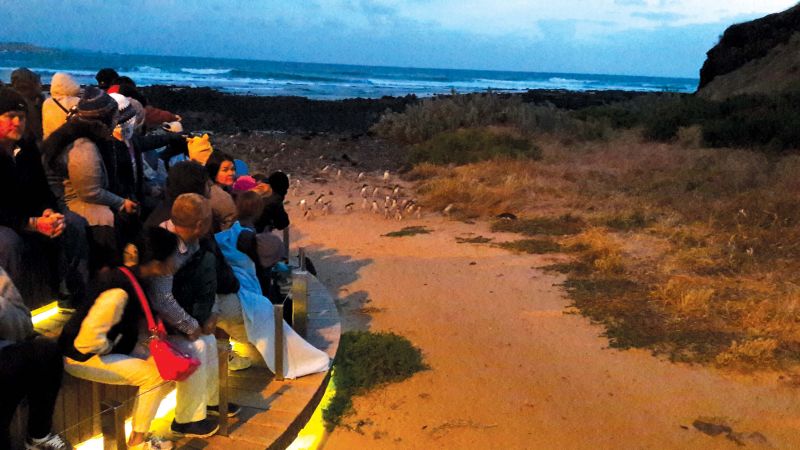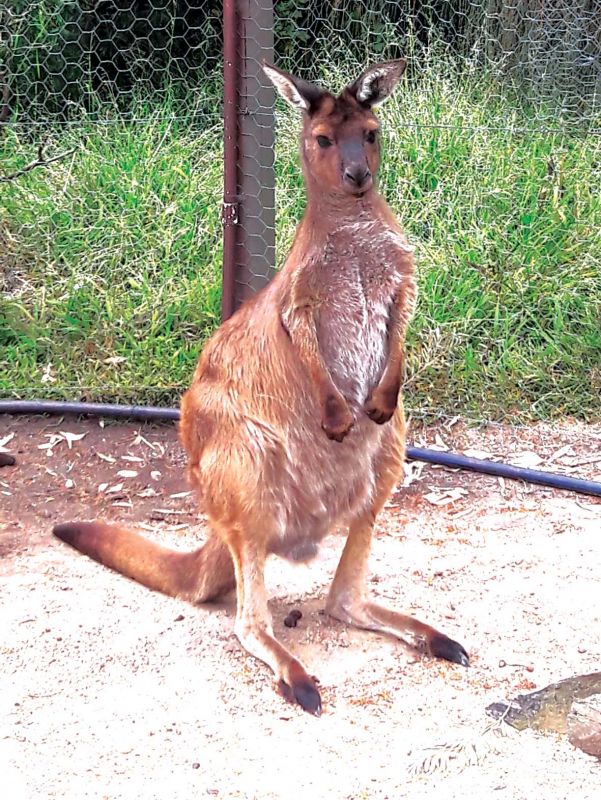Going wild in Victoria!
Anepic journey through Australia\'s smallest state reveals that there\'s so much more to their wildlife than kangaroos.

Four feisty femmes, six idyllic days, a 500-km road trip through Victoria, a state in South-eastern Australia. We learned many colourful Ozzie phrases and we listened to a lot of eclectic music. We met loads of friendly people who went out of their way to make us comfortable and countered our thanks with a nonchalant ‘too easy’! We swapped stories and jackets and understood each other’s cultures and lifestyles. We discussed everything from apples to anthropology as we drove along the most breath-taking Great Ocean Road to some of the most exciting wildlife reserves in the state of Victoria where a host of unique animals and birds awaited us. This is how we did it and you can too…
 Waiting for the Little Penguins to return on Phillip Island
Waiting for the Little Penguins to return on Phillip Island
Penguin parade
We dive straight in to the wildlife experience as we drive two hours to the Southeastfrom Melbourne to Phillip Island, where we will later see many Little Penguins. Before that, we stop at Churchill Island to meet researcher Dr Duncan Sutherland, who is working to save Eastern Barred Bandicoots. Sitting on a very pleasant bench under a tree, we learn that these are one of the many marsupial species that are unique to this continent. He tells us that what a marsupial is (the female has a pouch near her stomach in which she carries and feeds milk to her baby called a ‘joey’) and that Australia has more than 140 species of marsupials, including these bandicoots, koalas, kangaroos, wallabies, wombats, possums, platypus, wallaroos, potoroos, quolls, dunarts, antechinus, bilbies, Tasmanian devils, etc. Some are endangered (like these bandicoots, which are down to zero in the wild and only 100 in captivity), while others are destroying the environment through their extra-large populations.
Conservationists like him have to work round-the-clock to find the much-needed balance and it’s heartening to see the passion these researchers bring to their jobs.
As the shadows start to lengthen,we head to Summerland Beach on Phillip Island to see another aspect of Australia’s diverse wildlife.We settle ourselves on benches and wait for the ‘penguin parade’to begin. Every evening, hundreds of Little Penguins, the smallest species of penguins in the world, none taller than 33 cms, come out of a day’s fishing in the sea and waddle up the beach. They go past, oblivious to our presence, sometimes solo, sometimes more huddling together as protection from the chilly weather. It’s comical and cute and calculated to make you go ‘awwww’, even as you feel awe for the lengths (and depths!) these tiny birds go to, to feed themselves and their babies in the cold waters of the Southern Sea! The conservation team at Phillip Island is very conscientious and make sure no one uses cameras or does anything to cause them harm. The boardwalk we are on is at a slight height from the ground so the penguins can easily move around undisturbed, find their nests and tuck in for the night. We also check out the subterranean chamber with windows at eye level below us, a ‘hide’ which allows you to view the birds from up close. Our guide Ricardo Alves-Ferreira tells us how islands like the one we are on are safe havens for penguins, possums and bandicoots, which are otherwise at risk from predators like foxes and feral cats on the mainland.
Knock on wood
Today, it’s time to roll up our sleeves and help with conservation efforts. I pick up a hammer for the first time and am taught how to build nesting boxes that are set out at ground level for the Little Penguins (like we saw the night before) or up in the trees for the protection of Possums. Next, a visit to the Koala Conservation Centre to be briefed on koalas, these super cute creatures that are often mistaken to be bears but are actually marsupials. I catch sight of my first wild koala in a gum tree (that’s what eucalyptus is called in Oz), and am completely floored by its adorable sleepy, soft toy-like appearance.
Reluctantly, we leave and drive off to the Nobbies, a huge rocky island just off the shore, where a colony of Australian fur seals raise their noses to sniff the air fastidiously when we approach. The Antarctic Journey multi-media exhibit here is quite stunning and gives us a sense of undersea life, along with hands-on activities and an augmented reality experience which is extremely popular.
Back on the boardwalks down the cliff outside, even as the sun is shining brightly (it’s mid-December and summer when we’re here), a chill wind blows in to remind us that the Antarctic is only about 7,000 kms due south of where we’re standing! We drive back towards Melbourne and head via Werribee to the You Yangs Regional Park.
 A Kangaroo Island kangaroo at Melbourne Zoo
A Kangaroo Island kangaroo at Melbourne Zoo
Of koalas, kangaroos & kettles
We’re fortunate to meet Janine Duffy of the Echidna Walkabout Tours, who also heads the Koala Clancy Foundation to help people understand koalas better. She and her associate Mel King help us spot koalas up in the trees and tell us some fascinating facts as well as koala lore.Did you know that those cuddly things are almost all muscle? Or that each has a unique nose that’s as useful to identify each individual as a human fingerprint is? They show us the right way to approach a koala in the wild and the respectful distance one should keep (yes, hugging a koala, under any circumstances, is the worst thing you can do to it if you’re a true animal lover!).
They also put us to work, pulling up weeds with gloves on. These bone-seed shrubs hamper the growth of the gum trees and hence affect the koalas’ survival. After 30 minutes of hard labour, we are rewarded with a delicious picnic high up in the granite rocks. Janine makes us ‘billy tea’ and Mel explains the relevance of this traditional tea for the wandering Swagmen of yore. We settle down to a snooze in the shade and the general chatter gives way to a silence only broken by the gusting wind. I get a sense of the spirit of the space we are in.
These hills used to be very important to the local Aboriginal people of the Wathaurong tribe and once served as a meeting place for huge gatherings.
The pensive mood persists as we wait with bated breath in the bush (Australian for ‘jungle’) later, as Janine gets on her hands and knees to track a mob of Eastern Grey Kangaroos. We creep around behind her until suddenly, we spot the group grazing in the golden grasslands right in front of us! Each of the gorgeous creatures has beautiful doe eyes, thick fur that apparently smells of maple syrup and powerful legs that help these shy animals hop away really quickly.Our drive to our next stop is quite quiet and only punctuated by muted cries of excitement when a group of kangaroos shows up in the headlights as we turn into the Great Ocean Road Eco Lodge at Cape Otway.
Quoll it like it is
This morning, Shayne Neal, owner of the lodge, takes us on a walking trail to spot kangaroos and koalas and to show us a rare Tiger Quoll, that he and his wife Lizzie Corke are trying to save from extinction. It’s a privilege to see the fast-moving and fierce fellow who has the world’s second hardest bite after the Tasmanian Devil at such close quarters. We aren’t quite as lucky with the Duck-Billed Platypus later in the day on a ‘Paddle with the Platypus’ excursion by canoe on Lake Elizabeth.Otway Eco Tours’ owner Bruce Jackson points out several, but they are gone in a flash, using their electro-sensors to steer clear of us quite effectively.
Emus and emo
We head on to Warrnambool’s Tower Hill Wildlife Reserve, which has some wonderful walking trails around an inactive volcanic crater. We encounter some flightless but exceptionally eager Emus here, the biggest birds on the continent. There are other memorable moments, like getting an eyeful of the imposing Twelve Apostles formations along the seashore and then seeing the same dramatic limestone stacks from a helicopter. And the gorgeous Loch Ard Gorge that stands sentinel to the touching love story of two lone 19-year-old survivors from a shipwreck who washed up there and eventually fell in love.
Egg-cellent end!
This action-packed wilderness adventure has many unscheduled stops - for everything from pictures (we just can’t get enough of the stunning vistas of the Great Ocean Road that make such a great backdrop) to fantastic seafood (sigh, that restaurant at Lorne) to shopping and ice-cream. And, of course, plenty of dunny breaks(washroom visits) too. But the best stop comes as a pleasant surprise on the very last day. As we are driving back to Melbourne, I spot a tiny spiny thing scurrying across the road. Maree Martin, who handles International Media & Trade Relations for Visit Victoria and is showing us around the region, identifies it as an Echidna, the only living mammal that lays an egg! I don’t get the best picture of it before it disappears into the shrubs beside the road, but we feel lucky to have at least glimpsed it. Quite the perfect little memory to treasure always.

